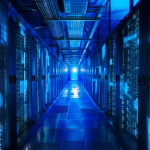When we talk about marathon runners, we’re talking about a unique breed of athletes. They’re committed, disciplined, and possess a drive that many of us can only dream of. But where do they get their edge? What’s the secret to their performance on the track? Undeniably, training and diet play a critical role, but there’s a less obvious factor that contributes to their impressive performance: the shoes they wear. More specifically, custom running shoes tailored through a complex process that involves gait analysis.
But what exactly is gait analysis and how does it contribute to the runner’s performance? How is it integrated into tailoring custom running shoes? This article will provide a comprehensive exploration of these questions.
Sujet a lire : What Are the Latest Innovations in Mouthguard Technology for Impact Sports?
Understanding Gait Analysis
Before delving into the specifics of how gait analysis is used in the creation of custom running shoes, it’s important to understand what exactly gait analysis is.
Gait analysis is a method used to assess the way we walk or run. It involves capturing data about the body’s movement and mechanics, and analyzing this data to identify any abnormalities or optimizations that could be made. This scientific method offers an in-depth understanding of a runner’s unique biomechanics, helping to pinpoint potential areas of stress or injury, and providing crucial information that can be used to tailor running shoes specifically for the runner’s needs.
A découvrir également : What’s the Effect of Dynamic Neuromuscular Stabilization Techniques on Recovery in Gymnastics?
The Role of Gait Analysis in Preventing Injuries
One of the key benefits of gait analysis is its role in preventing injuries. By providing detailed data about a runner’s foot-strike pattern, body alignment, and overall running style, gait analysis can help uncover potential areas of stress or injury.
For instance, if the analysis reveals that a runner is pronating (rolling the foot inward when running), this could lead to injuries like shin splints or stress fractures over time. By identifying this issue early on, the runner can take preventative measures, such as using custom orthotics or tailored running shoes, to provide extra support where needed and reduce the risk of injury.
Moreover, gait analysis can also help identify muscle imbalances or weaknesses that may be affecting a runner’s gait. By addressing these issues with targeted exercises or physiotherapy, runners can enhance their performance and ward off potential injuries.
How Gait Analysis Impacts Running Performance
Beyond injury prevention, gait analysis can also have a significant impact on a runner’s performance. By highlighting areas of inefficiency in a runner’s gait, the data can be used to make specific modifications to the runner’s footwear, resulting in enhanced performance on the track.
For example, if the gait analysis reveals that a runner is not using their forefoot efficiently during push-off, a custom running shoe with a firmer forefoot region could help correct this and improve their running efficiency. In this sense, the shoe acts as an extension of the runner’s foot, tailored to their specific needs, and helping them make the most out of every stride.
Furthermore, by identifying any biomechanical issues, such as overstriding or asymmetrical running patterns, runners can work on correcting these issues, further boosting their performance.
Custom Running Shoes: The Next Step in Performance Enhancement
As we’ve seen, gait analysis provides in-depth insights into a runner’s unique biomechanics. These insights can then be used to tailor custom running shoes that not only help prevent injuries but also enhance performance.
Custom running shoes are specifically designed to cater to a runner’s foot shape, running style, and biomechanical needs. They can provide additional support in areas where it’s needed, correct alignment issues, and offer optimal cushioning to minimize the stress placed on the foot during running.
Furthermore, custom running shoes can also provide superior comfort compared to off-the-shelf options. By conforming to the runner’s unique foot shape and gait, custom shoes can minimize friction and pressure points, reducing the risk of blisters and other discomforts that can hamper performance.
Integrating Gait Analysis into the Shoe Tailoring Process
To effectively integrate gait analysis into the shoe tailoring process, it’s essential to gather comprehensive data about the runner’s gait. This typically involves using video analysis or 3D motion capture technology to record the runner’s movement. The runner is usually asked to run on a treadmill or along a track while their gait is captured from various angles.
The captured data is then analyzed to assess various aspects of the runner’s gait, including foot strike, stride length, running symmetry, and more. This information can then be used to tailor the design and construction of the running shoe.
Once the shoe design has been finalized, a prototype is typically created and tested by the runner. This allows for any necessary adjustments to be made before the final shoe is produced. Through this iterative process, the runner ends up with a shoe that is perfectly tailored to their unique gait, helping them run more efficiently and comfortably, and ultimately, perform at their best.
Impact on the Shoe Industry and Future Developments
Advancements in gait analysis have undoubtedly impacted the shoe industry, especially in the realm of sports footwear. Custom running shoes are becoming increasingly popular, particularly amongst marathon runners who can benefit from footwear tailored to their specific running style and biomechanical needs. Furthermore, gait analysis has helped shoe manufacturers better understand the diverse needs of runners, leading to innovations in shoe design and technology.
The future of gait analysis and custom running shoes looks promising. As technology continues to advance, we can expect even more precise and comprehensive methods of capturing and analyzing gait data. This will allow for even more accurate customization of running shoes, further enhancing the performance and comfort of runners.
Moreover, we may also see a rise in the use of wearable technology in gait analysis. Wearable devices such as smart insoles and running watches are already being used to track a variety of metrics related to running, including pace, distance, and heart rate. As these devices become more advanced, they could potentially capture gait-related data in real-time, providing runners with valuable feedback that can help them improve their running form and efficiency.
Next, we could envision the further integration of AI technology. For instance, as AI continues to advance, we might see intelligent shoes that can adjust in real-time to a runner’s gait, providing optimal support, cushioning, and alignment at every step of the run.
Conclusion
In conclusion, gait analysis has revolutionized the way we approach running footwear. By providing detailed insights into a runner’s biomechanics, it allows for the creation of custom running shoes that can enhance performance, comfort, and injury prevention. The integration of gait analysis into the shoe tailoring process is a complex but incredibly effective method of ensuring that every runner has the optimal footwear for their unique needs.
The future of gait analysis and shoe customization is bright, with technological advancements promising to bring even greater precision and personalization. As we move forward, the role of gait analysis in tailoring custom running shoes for marathon runners will only become more significant, continuing to push the boundaries of what’s possible in athletic performance.
So, for marathon runners looking for that extra edge on the track, the answer may very well lie beneath their feet – in a pair of custom running shoes tailored specifically to their gait.






